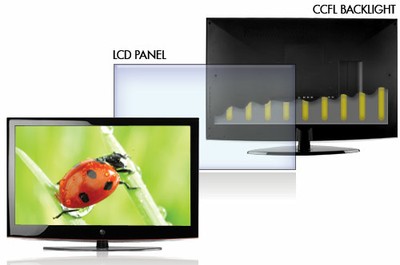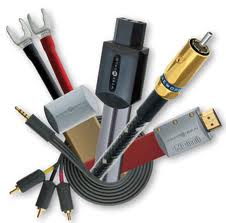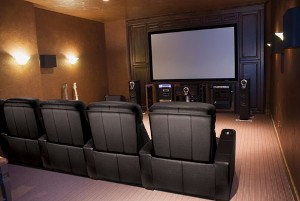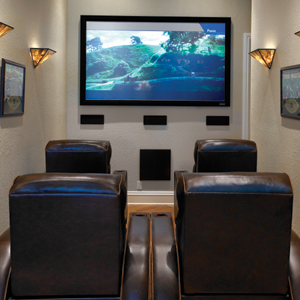
LED vs LCD TVs
How are LED TVs different from LCD TVs?
Simply stated, an LED TV is an LCD TV that is lit with an LED (light emitting diode) light source instead of CCFLs (cold cathode fluorescent lamp). Manufacturers such as Samsung began the trend of marketing the LED-lit LCD TV as an “LED TV” likely in an attempt to easily differentiate the product from typical CCFL lit LCD products.While an LED TV is still technically an LCD TV, just get used to seeing this type of designation. We don’t really have a problem with it and it does, among other things, seem to make it easier to say it out loud.

An LCD TV is comprised of several layers. The front layer is a piece of glass filled with liquid crystals that move and change to produce the images we see on the screen. But images can only be viewed when the screen is illuminated. This requires a light source. The light source is the difference between LED TV and conventional LCD TV.
Here’s a simple explanation of how it works: Conventional LCD TVs use fluorescent tubes (CCFL) to provide light to illuminate the LCD panel and make the images viewable. In an LED TV, the LCD panel is lit from behind with an LED-based backlight. LED lights can be more precisely controlled and can produce richer blacks and a better contrast ratio for a more vivid viewing experience.
Edge Lit vs. Rear Lit
With LED TVs, edge-lit technology is what allows some sets to be less than 1-inch thick. The LEDs are actually arranged around the very edge of the screen, allowing the display to be very thin, since the lighting technology isn’t positioned behind the screen. While this does indeed grant a thinner display, it typically (this is changing now) precludes te manufacturer from setting up a system that optimizes contrast across various areas of the screen.

Smart Dimming and Zones
Several manufacturers are optimizing their LED backlit displays to produce different amounts of backlighting on different areas of the screen. In this way, you can see content that contains bright areas on the screen along with very black areas. Think of a candle lit in a dark room. With your typical edge lit display you have one level for the overall backlight. With Smart Dimming, you can brightly light the part of the screen with teh candle, and then all but turn off the LEDs behind the black areas of the screen.
Should you expect to pay more for LED TV? What are the benefits of LED vs. LCD?
LED TVs like those form Westinghouse Digital are often edge-lit, which means they are generally more energy efficient, weigh less and cost less than full array LED TVs. Some LED TVs are engineered and produced so efficiently that they may even cost less than conventional CCFL lit LCD TVs. The bottom line is that LEDs are getting cheaper and cheaper and soon we estimate they will actually be easier and cheaper to produe than CCFL backlit displays.
LED TVs in general use less energy (and are therefore more efficient and economical to operate) than conventional LCD TVs. LED TVs are also thinner and weigh less than LCD TVs and generally create a brighter picture. For those who are environmentally concerned, LED TVs also contain no Mercury or Lead.
Presented by Westinghouse Digital and edited by Clint DeBoer
http://www.audioholics.com/education/display-formats-technology/led-vs-lcd-tvs
Custom Installation Services, LLC – First choice for low voltage wiring in Charlotte, NC and surrounding areas
Posted in 3D TV, Blu-ray, Flat Panel TV's, Gaming Systems, HDMI Specs, Home Theater, LED, Low Voltage Contractors, Media Rooms, Multi Room A/V, Music and Movies, News, recycling, Structured Wiring
|
Tagged 3d theater in charlotte, audio advice, Best Buy, Blu-ray, central vac dealers in charlotte nc, charlotte audio advice, charlotte custom home builders, connect wii to tv, custom home builders in charlotte nc, geek squad in charlotte nc, HD installers in Charlotte nc, Home theater installers Lake Norman, hook up xbox, innovative systems, LCD TV Installation, LED TV Installation, Low voltage contractors, Marantz, marantz dealers in Charlotte nc, speakercraft dealers in charlotte nc, tv installation, tweeter charlotte, Universal Remote programmers in charlotte nc, zobo
|
The Cabling Industry Needs a Makeover
 It’s time for the cabling industry to reassess how it approaches marketing to consumers. It’s time for the cabling industry to reassess how it approaches marketing to consumers.
I find Twitter entertaining and, at times, almost addicting. This morning a tweet from Production Advice’s Ian Shepherd shocked me with concern for an electronics category that I think is beneficial: cabling.
Shepherd retweeted a blog written by L.A. recording engineer Bobby Owsinski, who blogged about a 2008 Engadget story that asked 12 “audiophiles” to compare an audiophile cable brand with another cabling product. It turns out the other cabling product was a set of coat hangers. The crux of the story is that those audiophiles couldn’t tell the difference between coat hangers and expensive cables.
Adding insult to injury, Owsinski points out the obvious difference between the audiophile community and professional sound engineers that use their listening skills for work by noting, “‘audiophiles’ showed just why they get so much abuse from pros over their so-called “golden ears.”
Monster was the cable manufacturer in question in Engadget’s blind testing, and Owsinski says Monster does make good products; the problem, in his opinion, is with how the products are marketed. “Monster Cable takes some reasonably good cable and markets it in such a way that its perceived value is a lot greater than it deserves to be,” he asserts in his blog. “The problem is that for speaker cable, 12 or 10 gauge zip cord [lamp cable] will work just as well as expensive Monster cable.”
Unfortunately for the cabling industry, Owsinski isn’t alone in his opinion, and websites such as Audioholics.com fuel the public’s disdain for cabling by publishing stories that attack the credibility of many of the cable category’s claims for improved performance.
Like Owsinski, Gene DeSalla at Audioholics points out that Monster and other brands aren’t necessarily bad, its just that their products don’t measure up to the claims.
To rectify this problem, I think it’s time for the cabling category to own up to its self-generated hyperbole and tone it down. Let’s start by addressing the claims of exotic materials, proprietary construction techniques and slick geometry designs that contribute to their out-of-this-world performance claims without any third-party verification.
Manufacturers should look to develop products that are affordable to consumers in these difficult economic times. Too often, critics point to the steep price tags attached to some cabling products and note that a consumer could buy a nice car or place a down payment on a house with the amount of money some companies ask for a pair of speaker cables.
The last thing the cabling industry needs to do is educate the public on the benefits of a properly designed cable that employs quality materials. Owsinski says cabling can make a difference in how a system performs, and I believe he is correct. Using dealers, let’s teach consumers on how to buy cable and how to listen.
One other suggestion I would make is that maybe we should think about locking audiophiles in the basements from which they came. For all their passion about music and equipment, they inflict a lot of irreparable damage to an industry that can hardly afford the scrutiny of a public that doesn’t respect their collective opinions. OK, OK, I’m only kidding about that last suggestion, but I would take away their Diana Krall and Patricia Barber CDs and LPs as punishment for their past transgressions.
By Robert Archer
http://www.cepro.com/article/the_cabling_industry_needs_a_makeover/K536
Custom Installation Services, LLC – ”We may be a few dollars more than the competition, but we are a million times better”.
Posted in 3D TV, APC, Audio Systems, Blu-ray, Gaming Systems, Home Theater, LED, Media Rooms, Multi Room A/V, Structured Wiring, technology
|
Tagged 3d ready preamps, 3d theater in charlotte, apc or panamax, ashville nc strucuted cable, audio advice, audio and video equipment for sport bars, audio video architects charlotte nc, audio video installations charlotte nc, Best Buy, central vac dealers in charlotte nc, central vacuum installation charlotte nc, charlotte custom home builders, charlotte hd installers, Charlotte Home Theater, Charlotte onkyo dealers, Commercial electronics integrators, custom home builders in charlotte nc, custom home charlotte audi video, custom house tv charlotte, custom tv installations charlotte, customhome integration mooresvillenc, geek squad in charlotte nc, home audio consultation and design, Home Theater, innovative systems, speakercraft dealers in charlotte nc, tv installation above fireplace charlotte nc, universal remote service lake norman, whole house audio, zobo
|
Home Theater Basics: 12 Things for Newbies
 C.I.S. - Charlotte's Home Theater Company! All you really need to have a home theater are speakers, some basic audio/video equipment and some popcorn.
Getting a basic home theater system into your house may be far simpler than you think. You just need to understand what the basic components are and match them to your budget and performance needs.
At an elemental level, a home theater system needs a large video display device (generally a flat panel TV 50-inches and up or a projector/screen), a surround-sound speaker setup (at least 5.1 plus electronics for switching and processing), and some quality source components (Blu-ray, cable, streaming devices …) . That’s it. Sure, it can be a little more involved, but it isn’t rocket science. Here’s a more thorough breakdown of today’s home theater basics:
The Sights
1. A video display can be any size or style you want, as long as it’s big. For an immersive experience, we generally suggest a screen of at least 50 inches (measure diagonally), but smaller screens may make sense in some rooms. Your display will, of course, be high definition, and mostly likely 1080p resolution, though some 720p resolution TVs are still available.
When you’re planning your theater, a guideline for display size is that the viewing distance (the distance from you to the screen) should be 2 to 3 times the width of the screen (actually width, not the diagonal size).
2. A video display can utilize one of several technologies such as plasma, LCD (liquid crystal display), DLP (digital light processing), LCoS (liquid crystal on silicon) or some others. All of these technologies have their pros and cons, but all can create a home theater-quality picture at a variety of budgets.
3. The type of video display you choose will depend on your budget, how you intend to use the display and the space where you plan to enjoy your home theater. There are lots of options, but your selection will be made easier if you know what you’re seeking.
4. Think 3D. Stereoscopic, or 3D, started getting serious attention last year, and this year that attention is even greater. A 3D TV truly separates a home theater from simply a television as it adds one more element that, until recently, was unique to commercial theaters. Plus, all the technology that goes into make a TV 3D, also happens to make it an even better 2D TV for conventional viewing.
 The Sounds The Sounds
5. A home theater’s surround-sound system consists of five or more speakers, with three in the front near the video display and at least two on the sides or at the back of the room.
6. The three front speakers do most of the work to produce sounds that correspond with the action on the screen. Two speakers, called the front left and right channels, are typically placed on either side of the video display. A center-channel speaker is often placed above or below the screen. Two or more speakers on the sides or rear are referred to as surround speakers. Additional rear speakers or even height-channel speakers can create an even more realistic impression on the audience.
7. The center-channel speaker is the most important loudspeaker in a surround-sound setup. This is because it reproduces a great majority of the sounds you hear in a movie soundtrack, including all of the dialogue. You’ll want to hear every word clearly and feel as if the dialogue is coming directly from the actors’ mouths.
8. The role of surround speakers is to convey ambient sounds, such as background noises, rumbles or passing cars or planes. These speakers help fully immerse you in a movie. The surround sound speakers generally shouldn’t be too obvious to the listener, so don’t crank them up too loud or the effect will be unnatural.
9. There are several surround speaker options. You can have two speakers, one on each side of the seating area. You can have three speakers, with one on each side and one in the back, allowing you to better hear the effects of movement such as that of a passing car or a train or airplane. You can have four speakers, with two on each side. Or you can have even more speakers. It’s really a matter of how far you want to go.
10. Specialty speakers called subwoofers produce low bass sounds so you will hear the full impact of sound effects such as explosions or the roar of a jet engine. Subwoofers can be placed virtually anywhere. People often put them in a front corner, behind a plant or a table or even under a couch. Subwoofers are not full-range speaker channels, meaning they only produce a fraction of the sounds you hear. In surround-sound parlance, subwoofers represent the “.1” in 5.1, 6.1 or 7.1 systems (5.1 meaning the basic surround-sound setup of five speaker channels plus a subwoofer, 6.1 meaning six channels and a subwoofer and 7.1 meaning seven channels plus a subwoofer). Multiple subwoofers can also be used.
11. To get sound to the speakers and video to the screen, you’ll need switching and processing components like a surround-sound receiver or a controller and amplifier. Receivers contain amplifiers, precluding the need for a separate amplifier, though for higher performance you may opt for a separate surround-sound controller and a power amplifier. Look for a receiver with multiple HDMI inputs (version 1.4 is the latest) for all your sources. Additional features such as iPods connectively, Internet radio, DLNA, multi-zone and audio calibration systems can add to your home theater’s functionality and ease of use.
12. Sources for all Tastes. Well, of course you’ll want something to watch, right? For most people, the two most fundamental sources will be a TV tuner (cable, FiOS or satellite box) and a Blu-ray player. Other great sources for home theaters include gaming consoles and web media players (such as Roku and similar products). Many Blu-ray players or TVs include built-in web-based services such as Netflix, Vudu and Amazon Instant Video.
by EH Staff
http://www.electronichouse.com/article/12_things_you_need_to_know_about_home_theater/
Custom Installation Services, LLC – ”We may be a few dollars more than the competition, but we are a million times better”.
Posted in Uncategorized
|
Tagged 3d theater in charlotte, audio advice, audio video installers sports bars, Best Buy, business audio video, central vac dealers in charlotte nc, charlotte a/v, charlotte audio advice, charlotte audio video, charlotte hd installers, charlotte nc architects, corporate a/v installation, HD installers in Charlotte nc, home audio consultation and design, home automation companies in charlotte, home theater charlotte, home theater furniture, home theater installers charlotte, innovative systems, marantz dealers in Charlotte nc, sports bar a/v installers, Universal Remote programmers in charlotte nc, whole house audio, zobo
|
|
|
|








